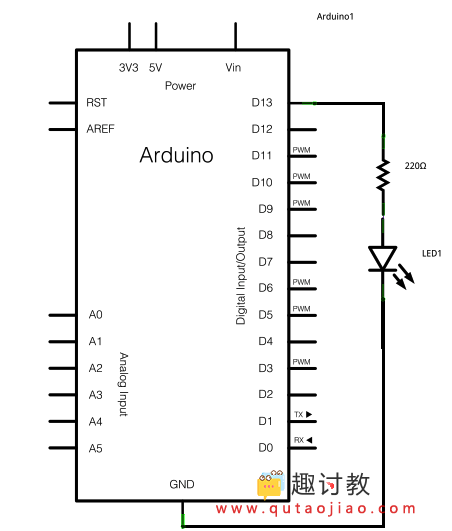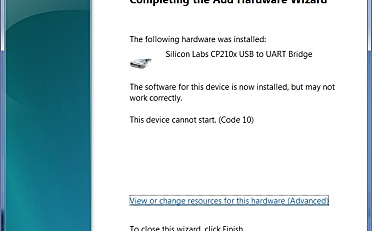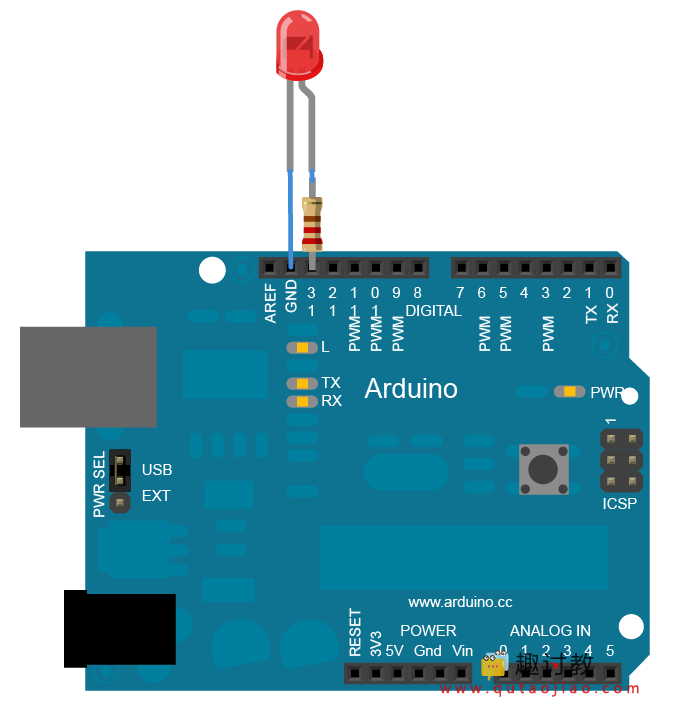释放双眼,带上耳机,听听看~!
有时候你需要同时做两件事。如你可能想闪烁一个LED灯,同时读取一个按键。这种情况下你不能使用delay()。如果Arduino因为delay()函数被暂停时有按键按下,你的程序会错过这次的按键按下。
目录
简介
- 有时候你需要同时做两件事。如你可能想闪烁一个LED灯,同时读取一个按键。这种情况下你不能使用delay()。如果Arduino因为delay()函数被暂停时有按键按下,你的程序会错过这次的按键按下。
- 这个程序示范怎样不用delay()来闪烁一个LED灯。它打开LED灯,并标注一个时间。然后每次运行完loop(),它都会查一下有没有超过需要的闪烁时间。如果它超过了,它就会切换LED灯为打开或者关闭状态,然后标注新的时间。在这种方法里LED灯不断闪烁,同时这个程序的执行从来没有漏掉一个指令。
- 你在等一些重要邮件时,你可能要微波炉加热一个比萨。你把比萨放到微波炉,然后设置10分钟。用delay()就是坐在微波炉前面看着时间度过10分钟。如果重要邮件在这段时间到了,你会错过它。
- 而现实中你能做到边加热比萨,边检查邮件,或者做其他事情,只要等到定时器到0(意味着比萨已经完成)时你回到微波炉前面。
- 在这个教程你将会学习怎样设置一个简单的定时器。
硬件要求
- Arduino or Genuino开发板
- LED
- 220 欧姆电阻
电路
- 先连接电阻的一端到Arduino的PIN13引脚。再连接LED灯的长引脚(正脚,也叫阳极)到电阻的另一端。最后连接LED灯的短引脚(负脚,也叫负极)到Arduino的GND引脚。如图所示

- 大部分Arduino开发板上面就有一个LED灯连接到PIN13。如果你不连接硬件就运行这个例子,你应该也可以看到LED闪烁。
原理图

你插好电路板,连上电脑之后,打开Arduino IDE软件,输入以下代码。
样例代码
以下代码用 millis()函数来闪烁LED灯,如果开发板开始运行,会返回微秒的数值
/* Blink without Delay
Turns on and off a light emitting diode (LED) connected to a digital
pin, without using the delay() function. This means that other code
can run at the same time without being interrupted by the LED code.
The circuit:
* LED attached from pin 13 to ground.
* Note: on most Arduinos, there is already an LED on the board
that's attached to pin 13, so no hardware is needed for this example.
created 2005
by David A. Mellis
modified 8 Feb 2010
by Paul Stoffregen
modified 11 Nov 2013
by Scott Fitzgerald
This example code is in the public domain.
http://www.arduino.cc/en/Tutorial/BlinkWithoutDelay
*/
// constants won't change. Used here to set a pin number :
const int ledPin = 13; // the number of the LED pin
// Variables will change :
int ledState = LOW; // ledState used to set the LED
// Generally, you should use "unsigned long" for variables that hold time
// The value will quickly become too large for an int to store
unsigned long previousMillis = 0; // will store last time LED was updated
// constants won't change :
const long interval = 1000; // interval at which to blink (milliseconds)
void setup() {
// set the digital pin as output:
pinMode(ledPin, OUTPUT);
}
void loop() {
// here is where you'd put code that needs to be running all the time.
// check to see if it's time to blink the LED; that is, if the
// difference between the current time and last time you blinked
// the LED is bigger than the interval at which you want to
// blink the LED.
unsigned long currentMillis = millis();
if (currentMillis - previousMillis >= interval) {
// save the last time you blinked the LED
previousMillis = currentMillis;
// if the LED is off turn it on and vice-versa:
if (ledState == LOW) {
ledState = HIGH;
} else {
ledState = LOW;
}
// set the LED with the ledState of the variable:
digitalWrite(ledPin, ledState);
}
}


















